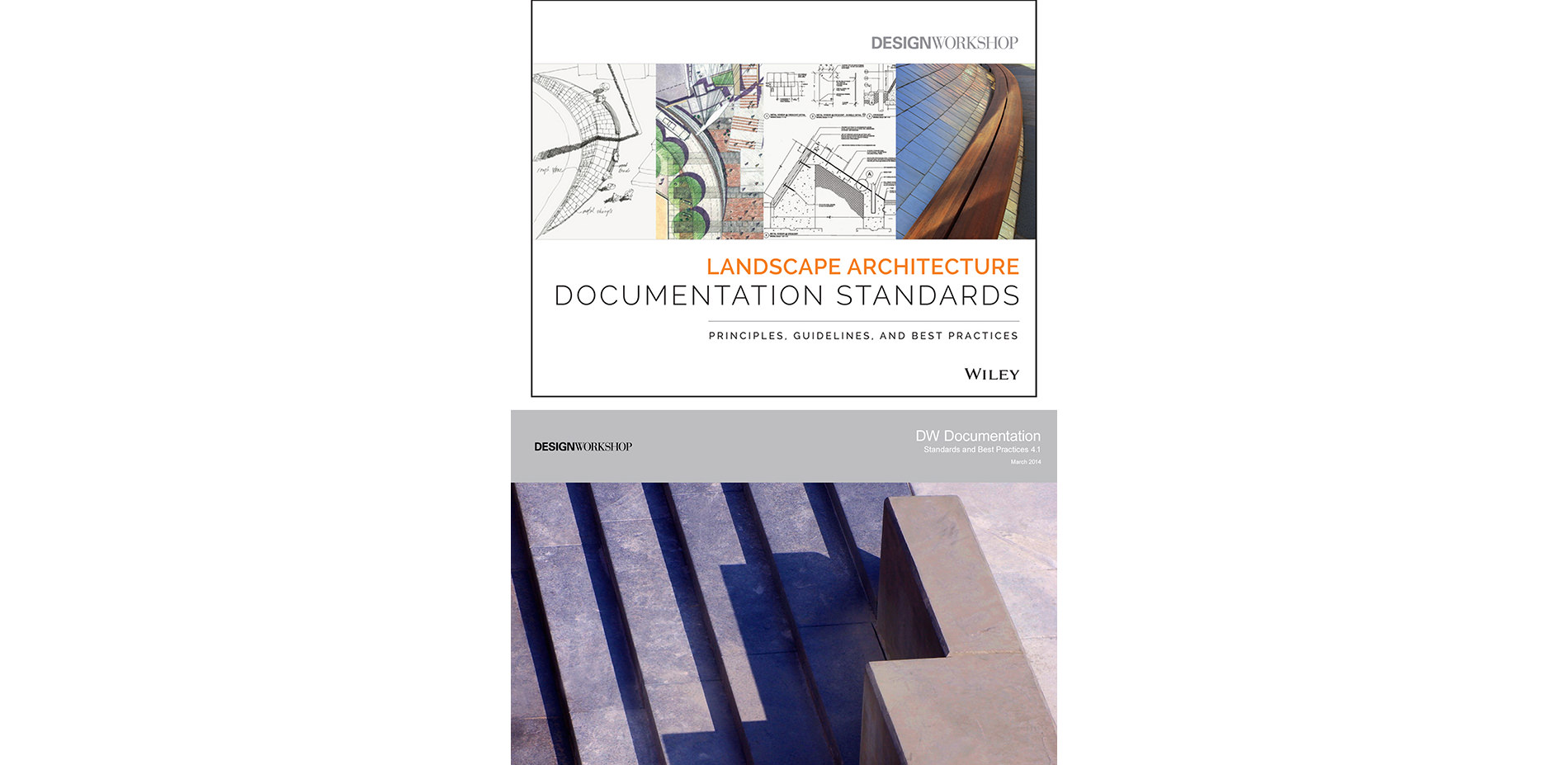
Iterated Versions:
Multiple internal versions of the standards have been developed, tested and improved over the course of a decade. Here, a recent internal version is represented.
Photo Credit: Design Workshop, Inc.
Media: Please submit high-resolution image requests to images@asla.org.
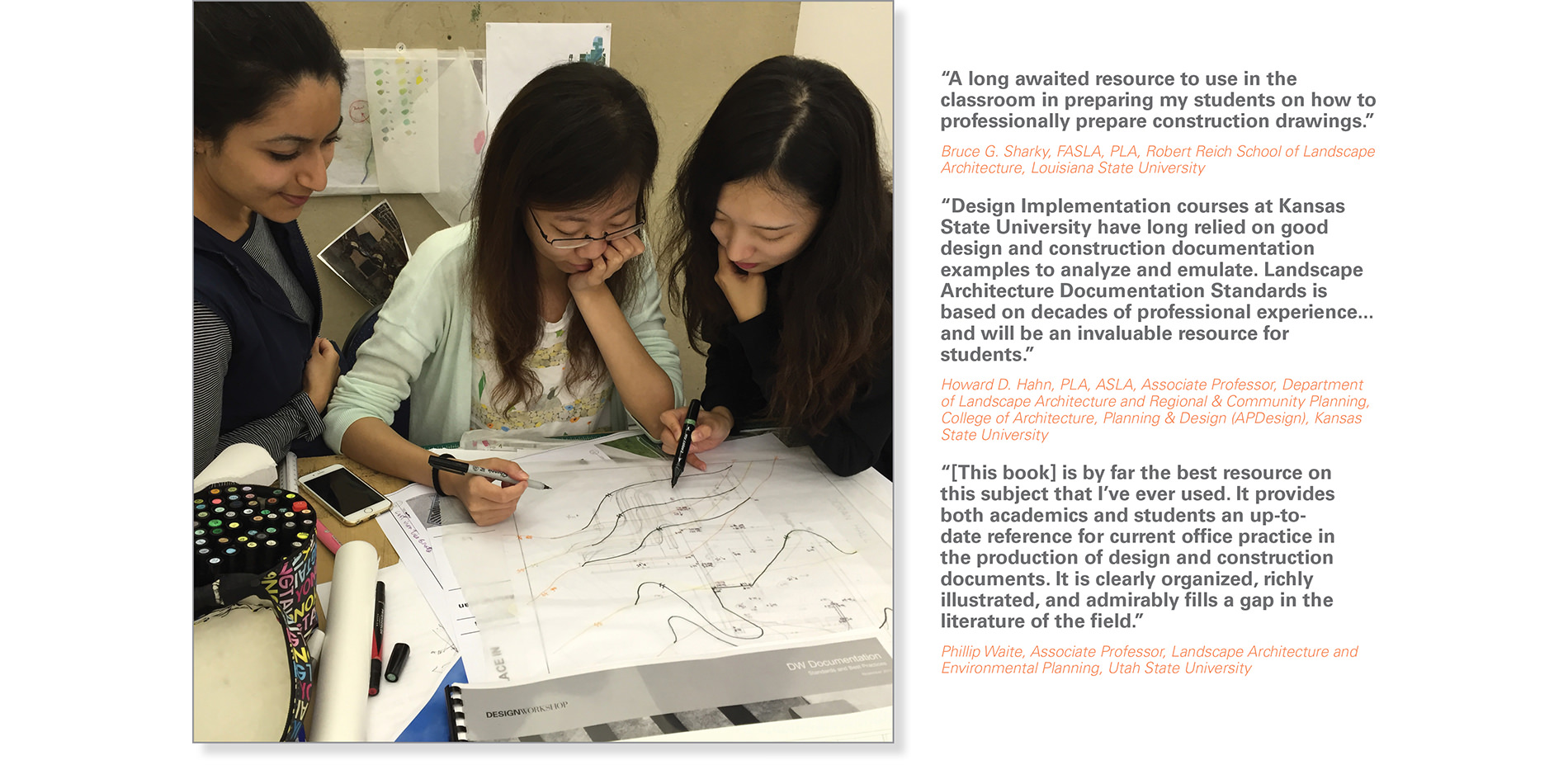
Seasoned Faculty Testimonials:
The publication has been field-tested by LSU, Kansas State, Utah State, Virginia Tech and Illinois faculty for several semesters. Some of these faculty provided peer review comments on draft versions of the document.
Photo Credit: Design Workshop, Inc.
Media: Please submit high-resolution image requests to images@asla.org.
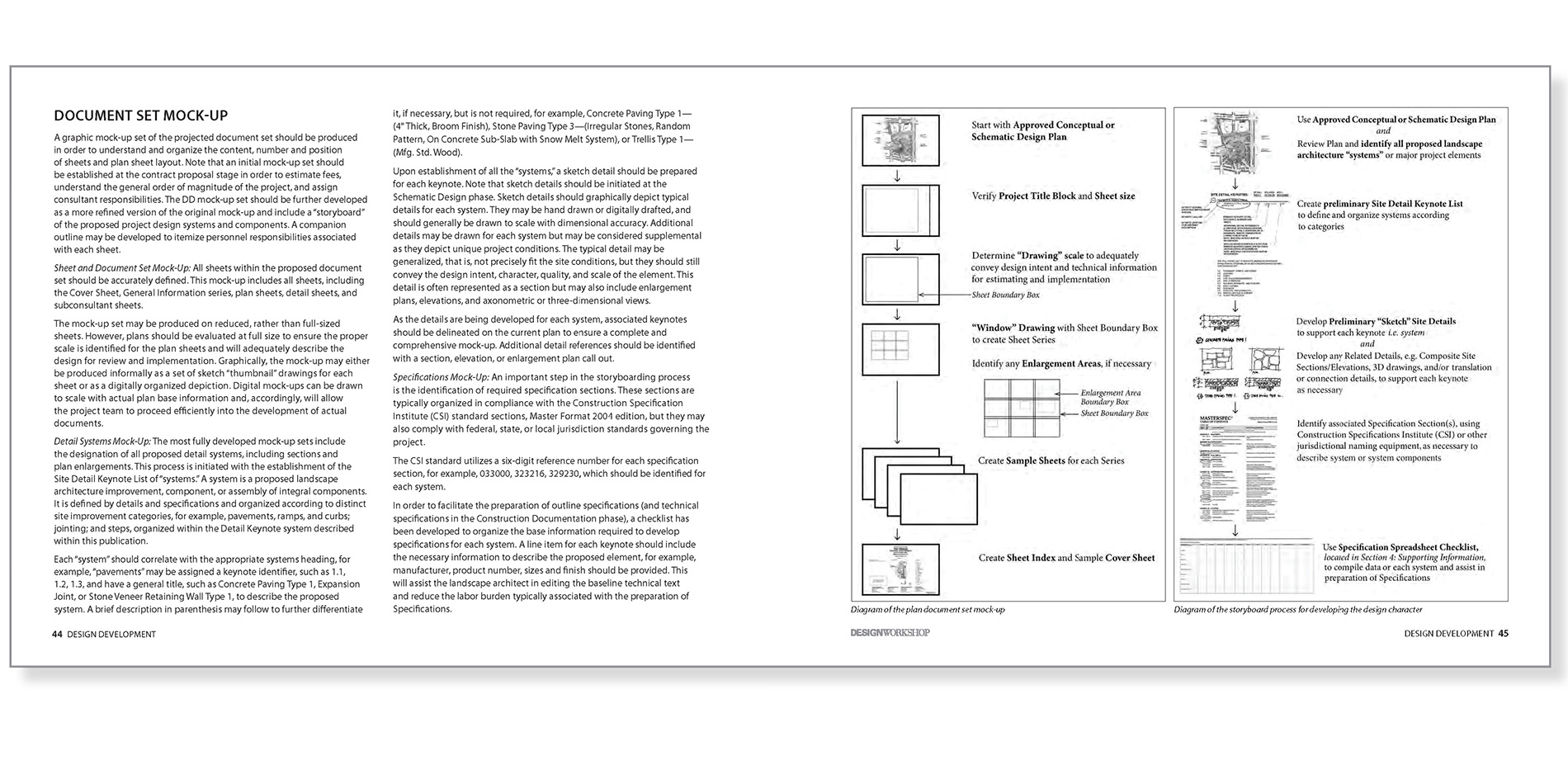
Visualizing the Outcome:
The book conveys fundamental documentation practices with the use of example graphics and supporting narrative requirements. These pages illustrate how a landscape architect should begin visualizing project documentation with an explicit graphic mock-up.
Photo Credit: Design Workshop, Inc.
Media: Please submit high-resolution image requests to images@asla.org.
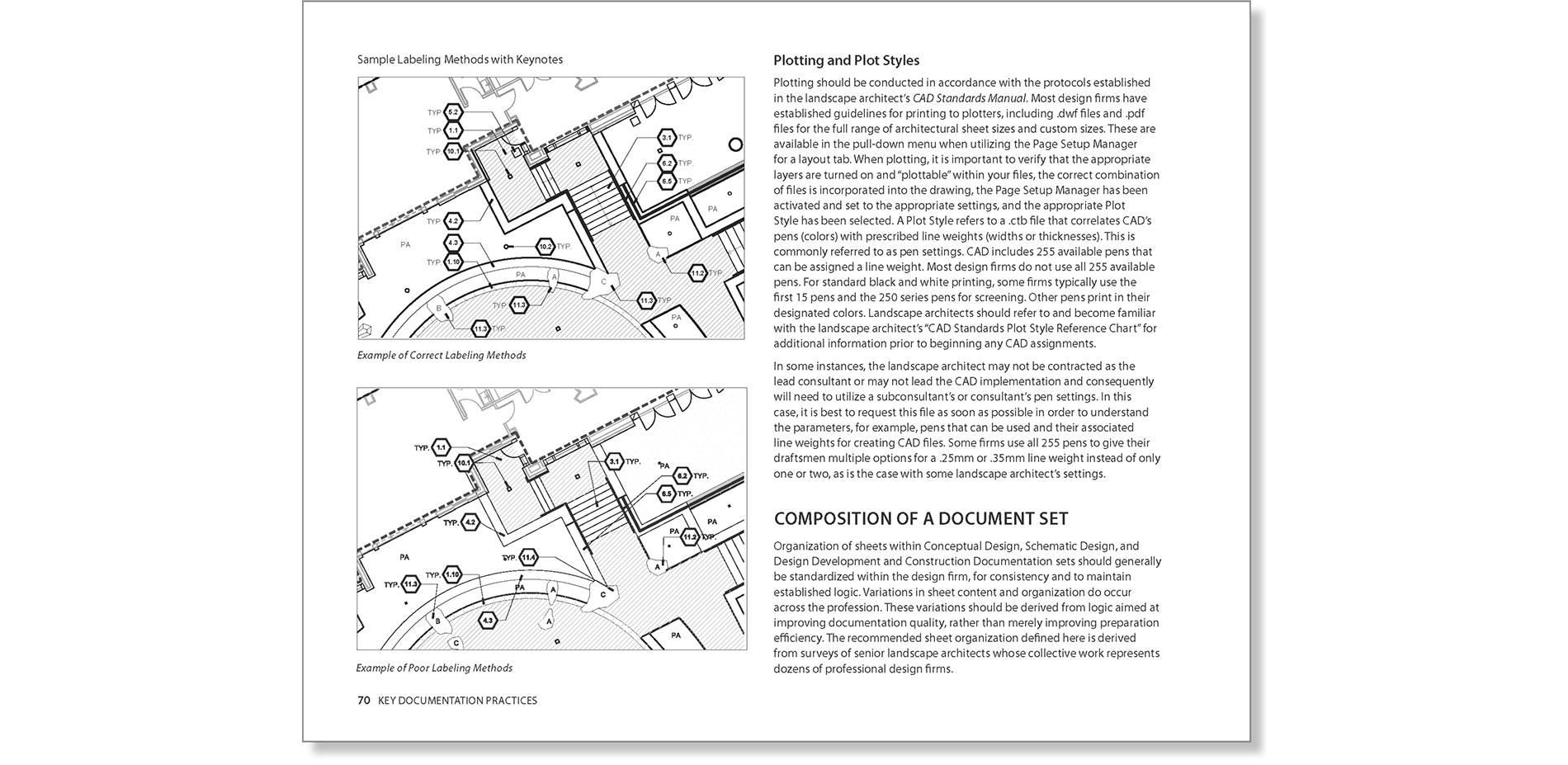
Principled Guidelines:
A comprehensive range of documentation practices are addressed, each with attention to earlier established principles. Graphic practices are aligned with the principle which suggests “telling the most with the least information.”
Photo Credit: Design Workshop, Inc.
Media: Please submit high-resolution image requests to images@asla.org.
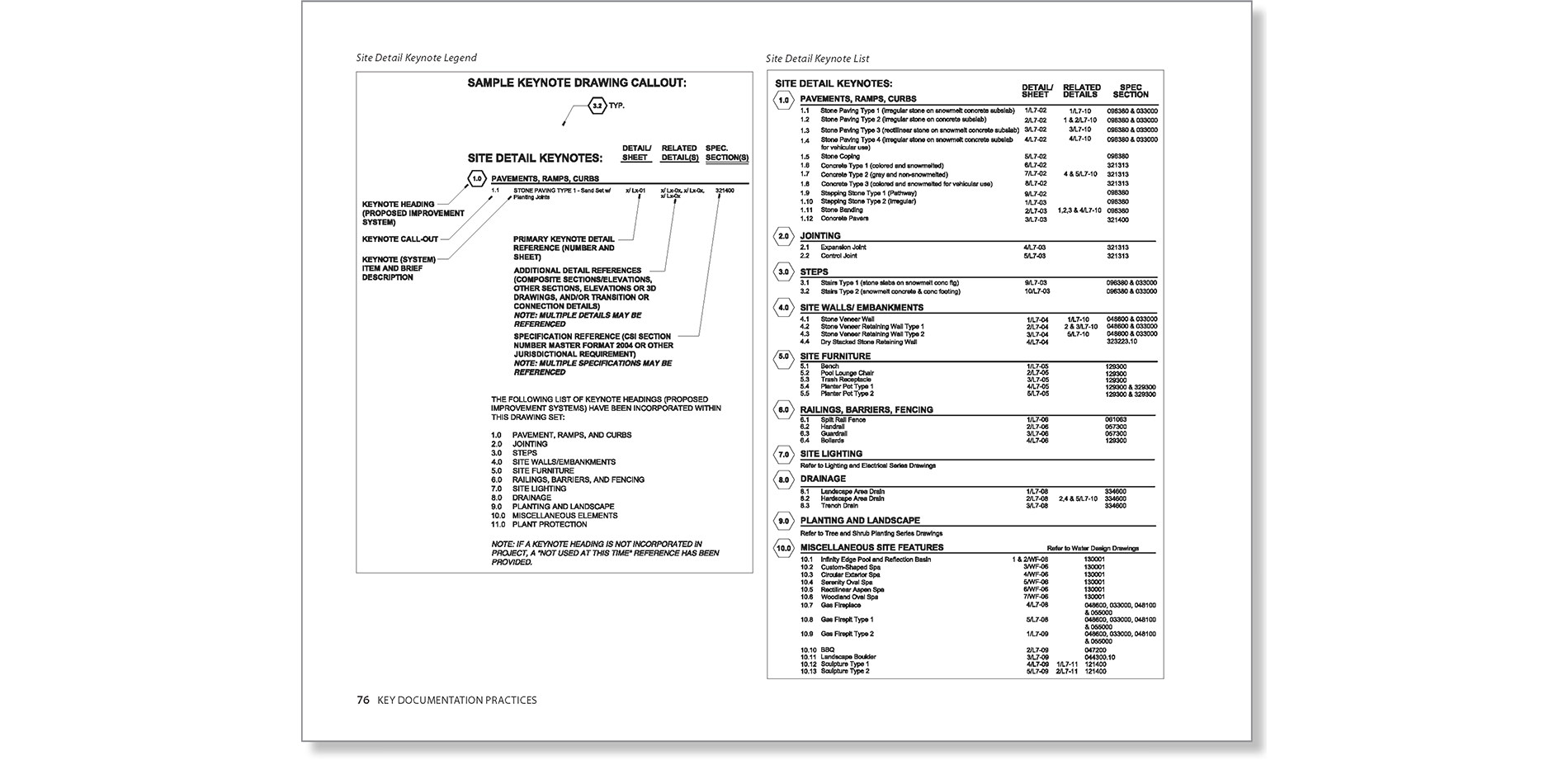
Keynoting Systems, the Backbone of the Documents:
While a range of keynoting systems are used across the design industries, a foundational set of keynoting practices is defined. Keynotes are a key organizational element of landscape architectural documentation.
Photo Credit: Design Workshop, Inc.
Media: Please submit high-resolution image requests to images@asla.org.
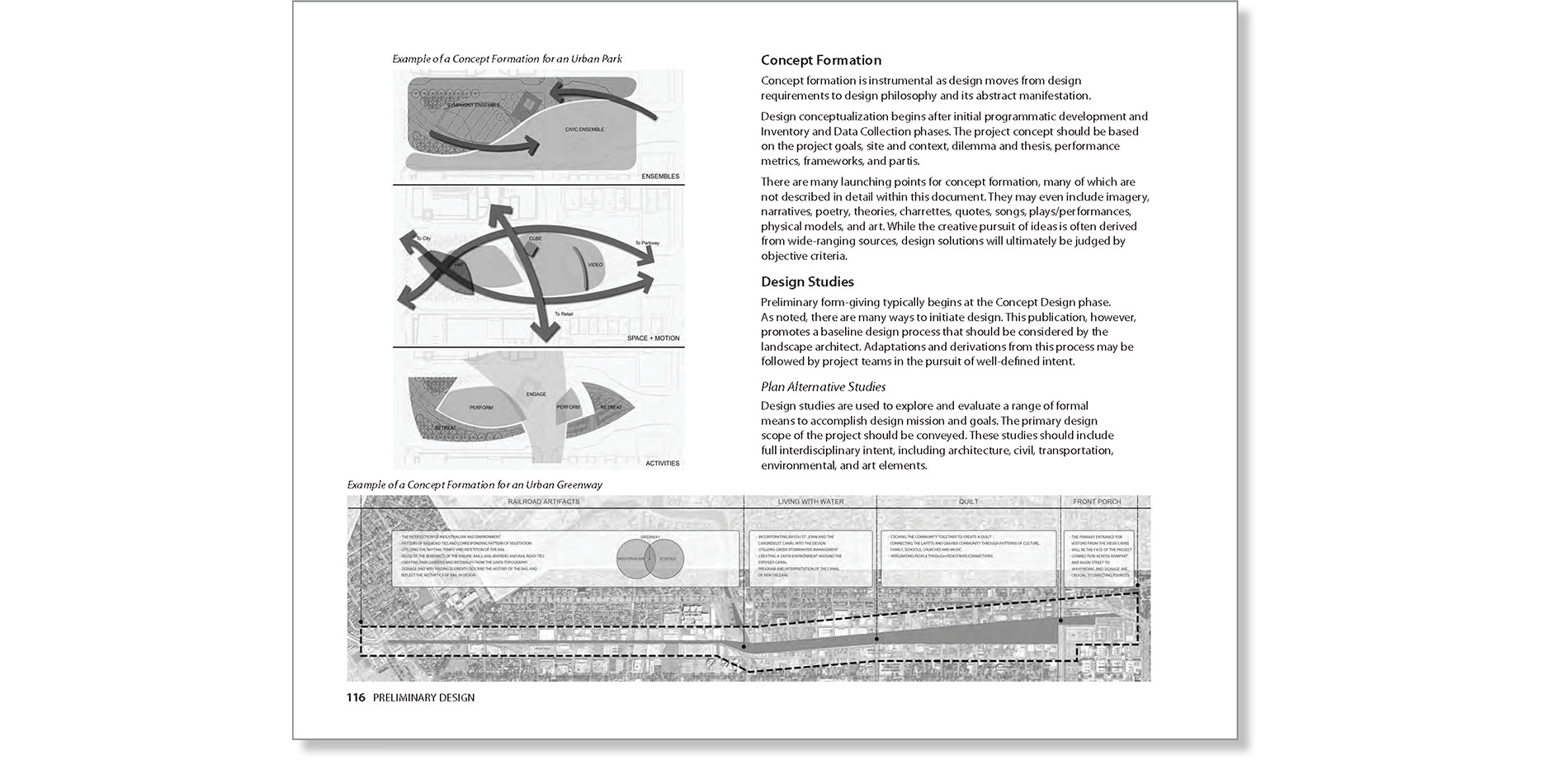
Early Stage Documentation:
A flexible and wide-ranging set of design and documentation practices are included at Pre-Design, Concept Design and Schematic Design phases. Regardless of how recommended elements are documented, the basic content should not be overlooked.
Photo Credit: Design Workshop, Inc.
Media: Please submit high-resolution image requests to images@asla.org.
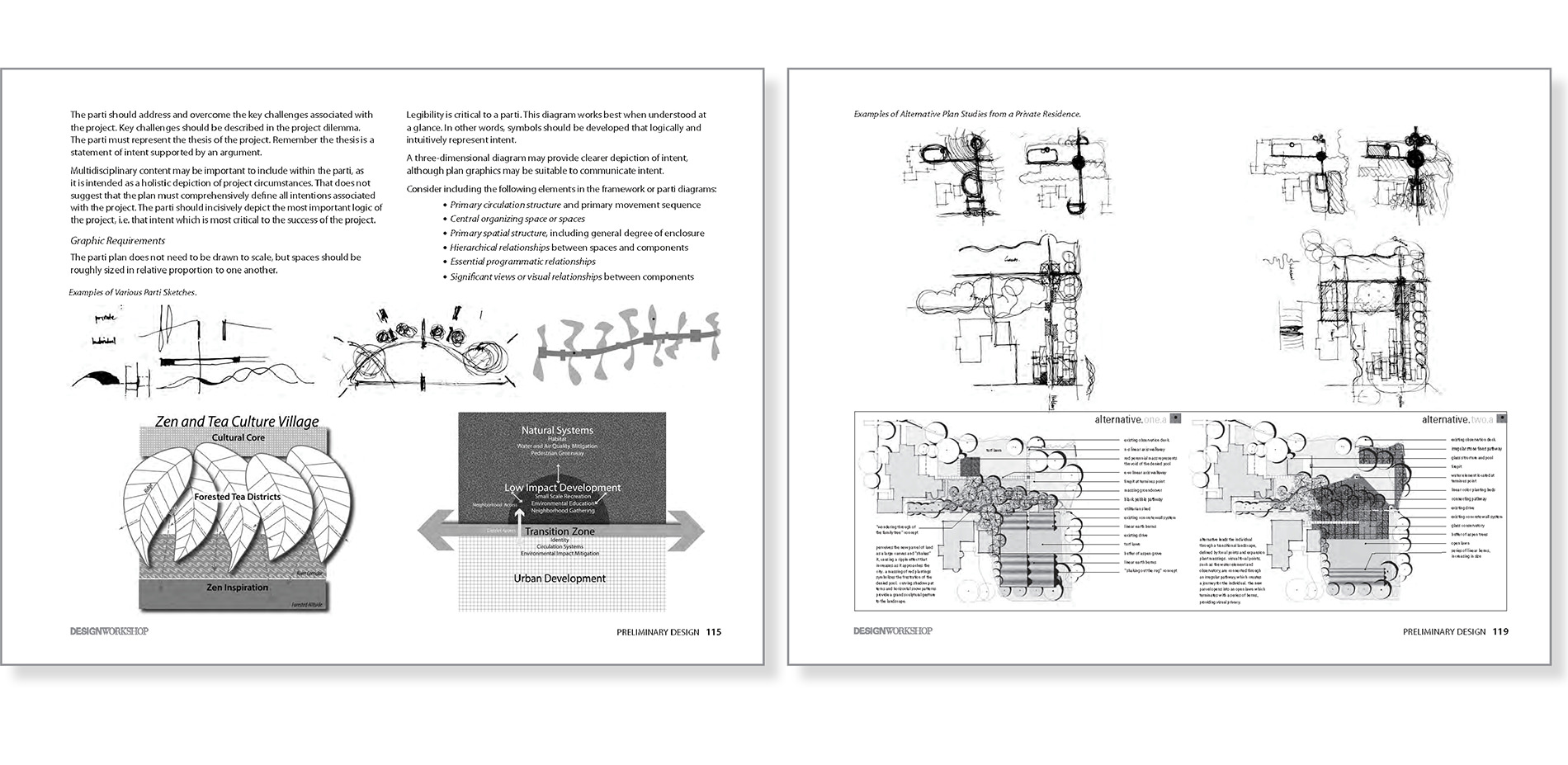
Design and Documentation Relationships:
Relationships between design process and associated documentation strategies is a key element of the book. For example, well-documented exploration and objective evaluation of alternative solutions is shared.
Photo Credit: Design Workshop, Inc.
Media: Please submit high-resolution image requests to images@asla.org.
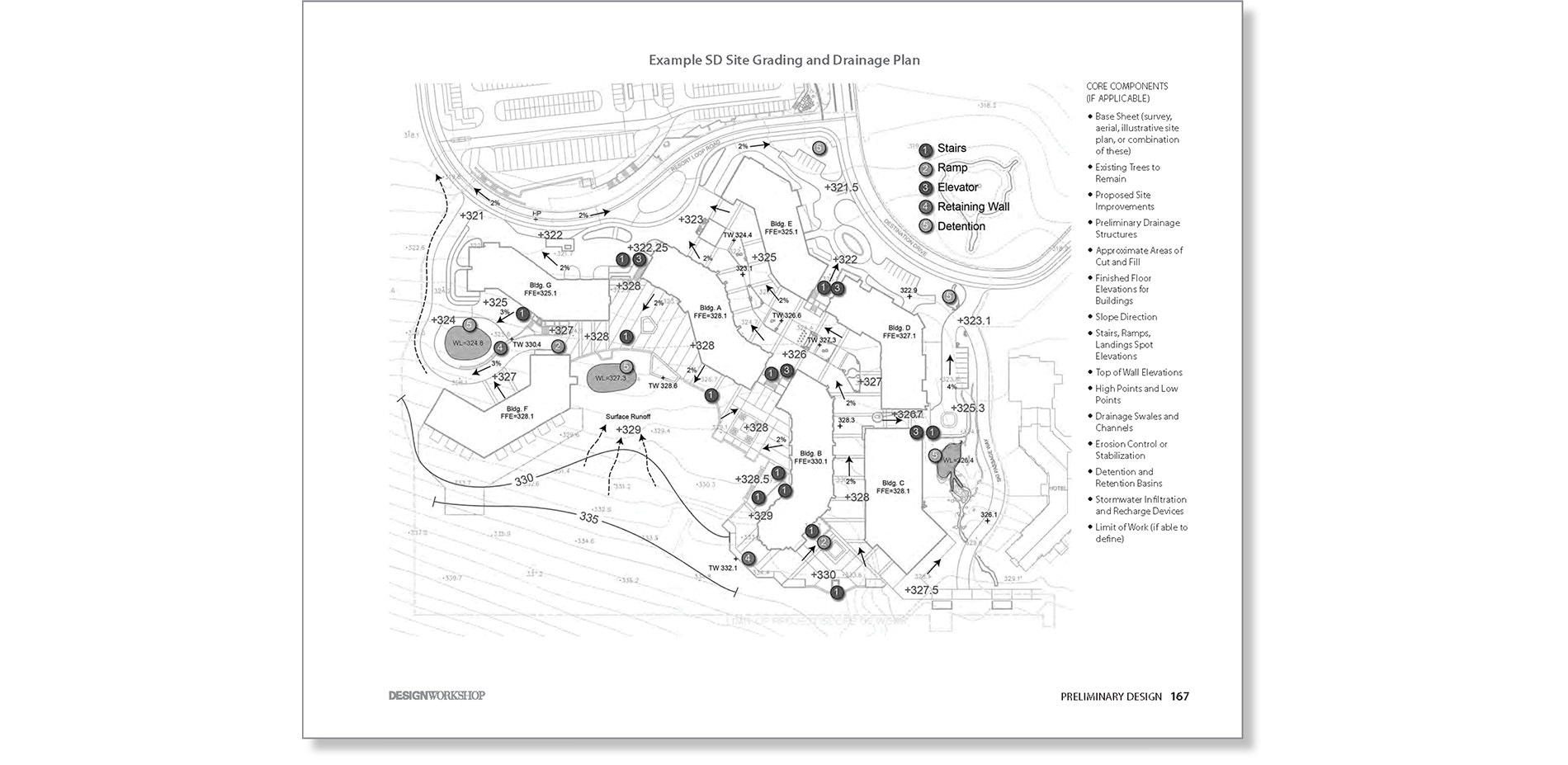
Elevating the Role of Schematic Design:
A primary thesis suggests that Schematic Design must represent a comprehensive foundation of design intent, from which DD documents can readily be developed. Schematic design documents often fall short of this objective.
Photo Credit: Design Workshop, Inc.
Media: Please submit high-resolution image requests to images@asla.org.
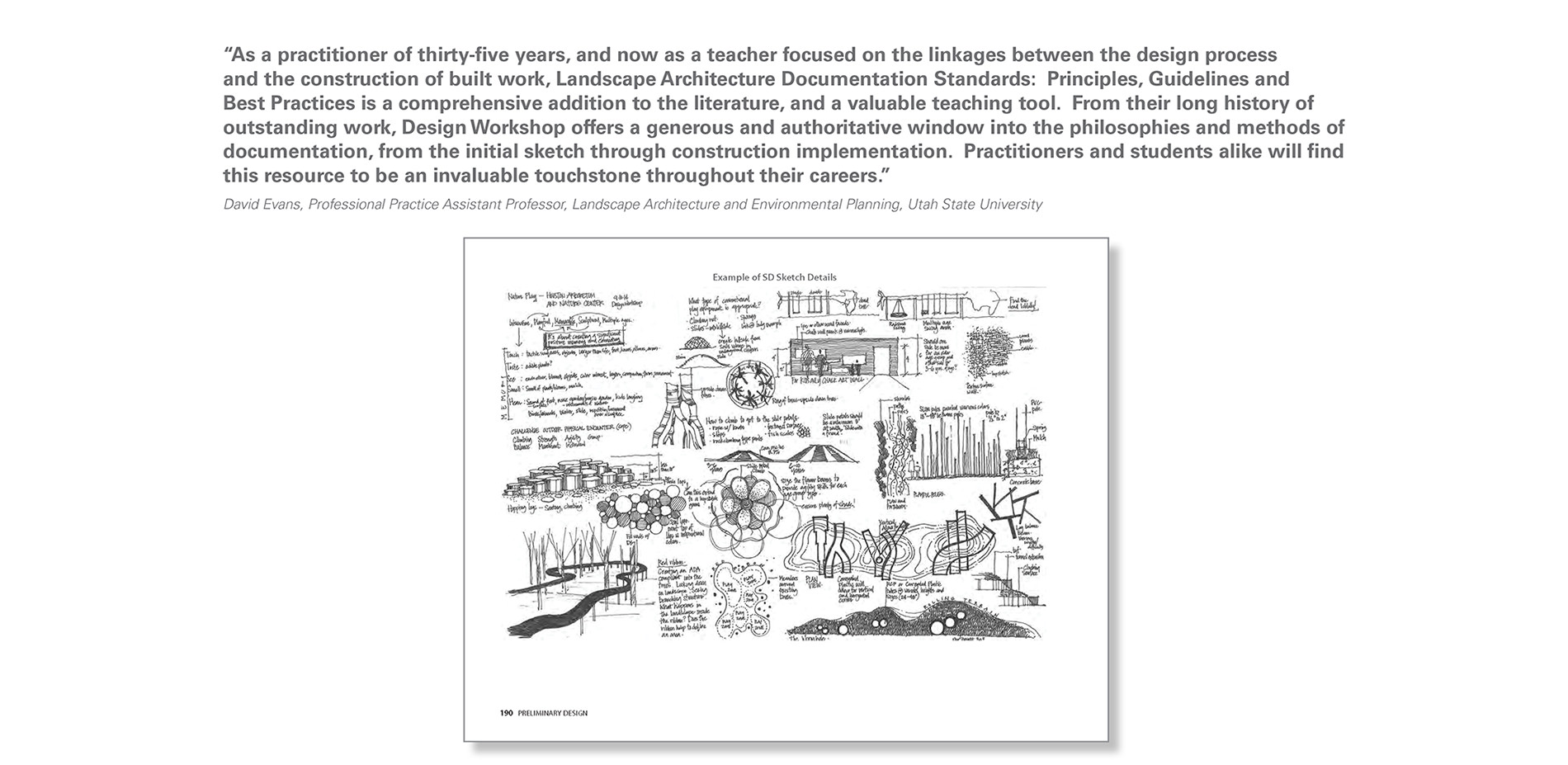
Schematic Sketch Details:
Often, landscape architects relegate detail development to late design stages, following early emphasis on plan development. This book promotes the foundational role of Sketch Details in establishing overall character and serving the project mission.
Photo Credit: Design Workshop, Inc.
Media: Please submit high-resolution image requests to images@asla.org.
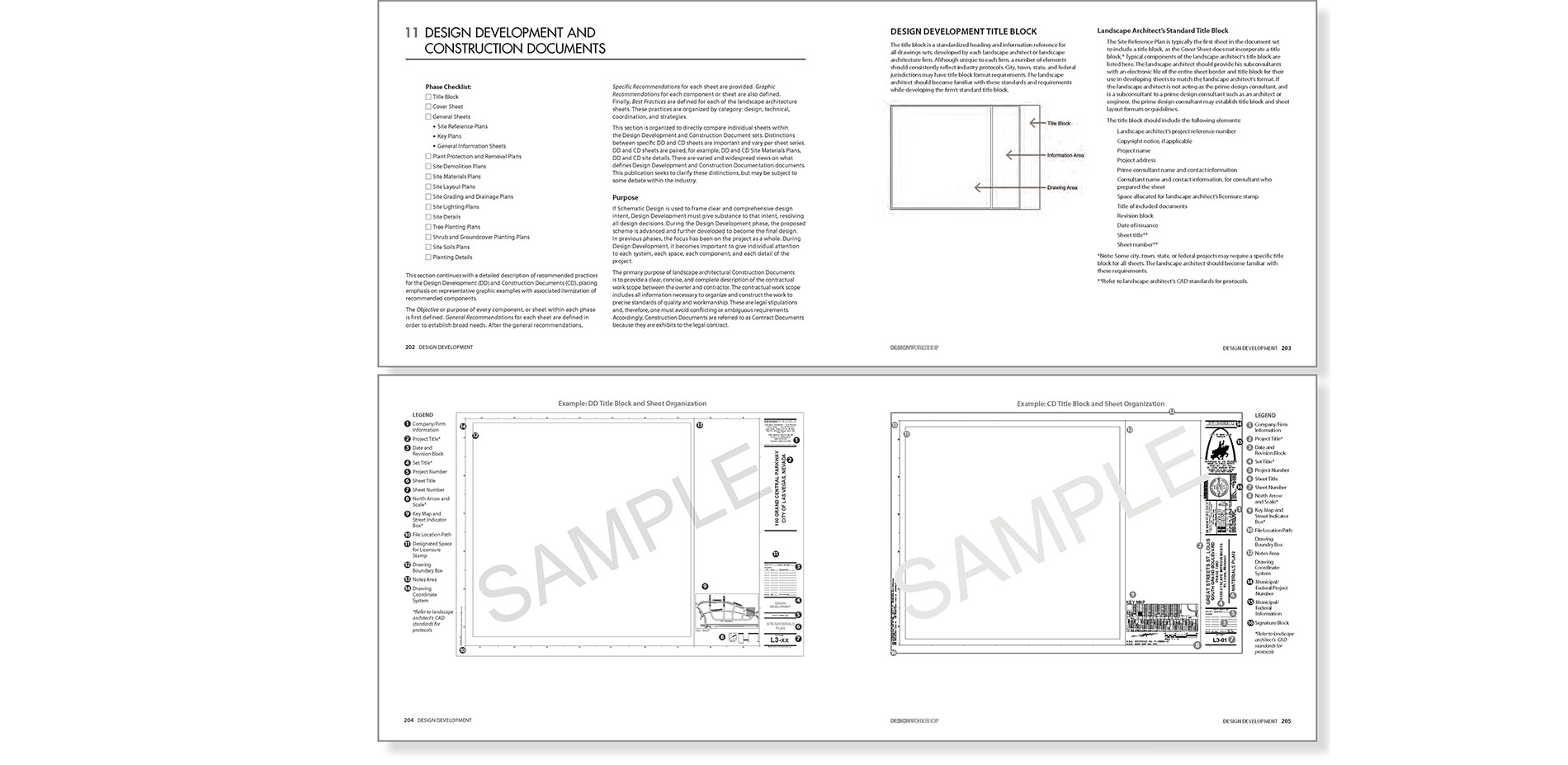
Base Sheet Structure:
Every landscape architect or landscape architecture firm should establish their own standards for base sheet content and layout. While these standards will vary, recommended content is defined within these guidelines.
Photo Credit: Design Workshop, Inc.
Media: Please submit high-resolution image requests to images@asla.org.
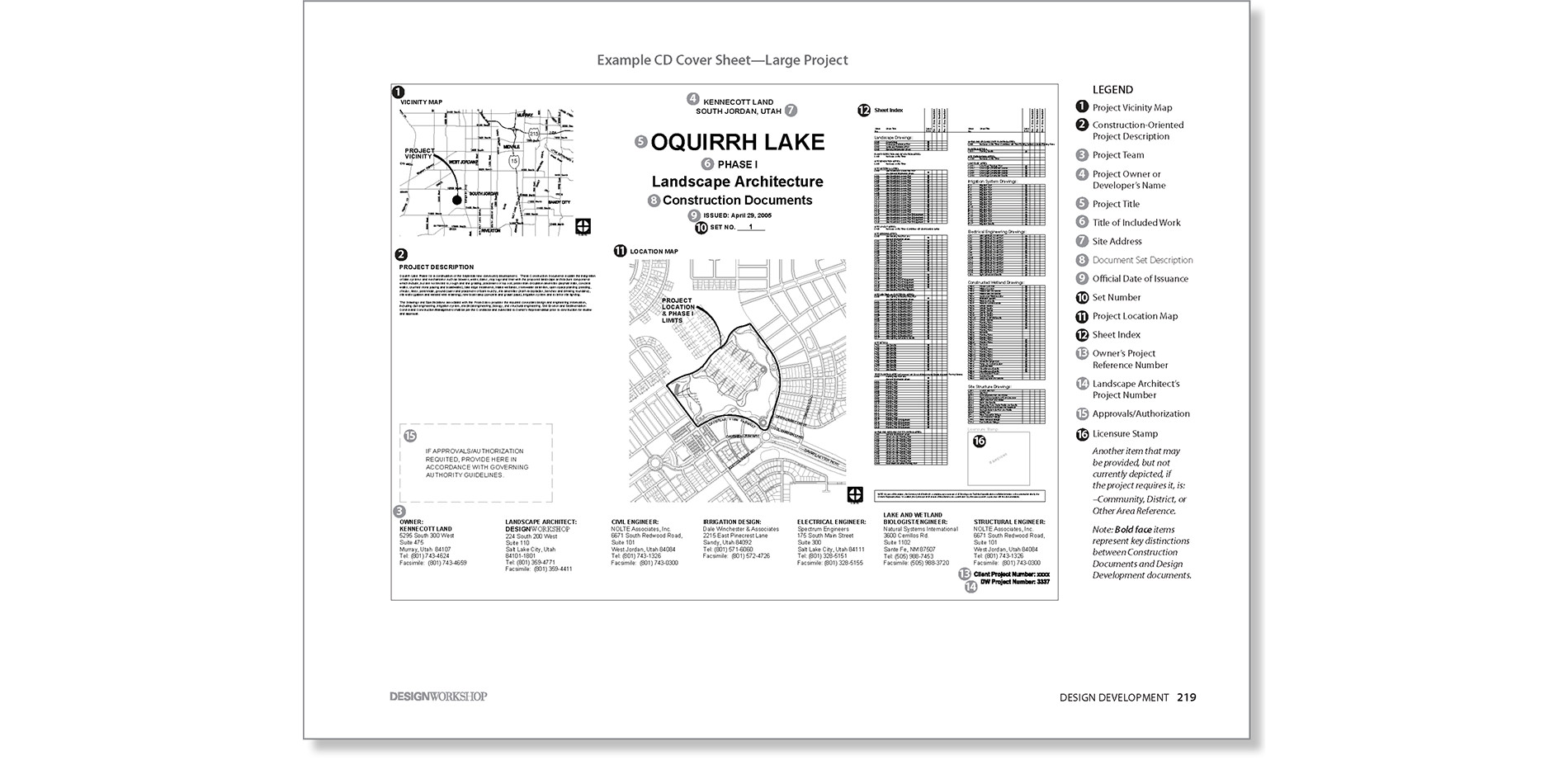
Sheet Evolution:
A critical role of the book is to clearly define evolutionary distinctions between SD, DD and CD sheets. These distinctions, especially between DD and CD sheets are not always clear and are subject to varying interpretation.
Photo Credit: Design Workshop, Inc.
Media: Please submit high-resolution image requests to images@asla.org.
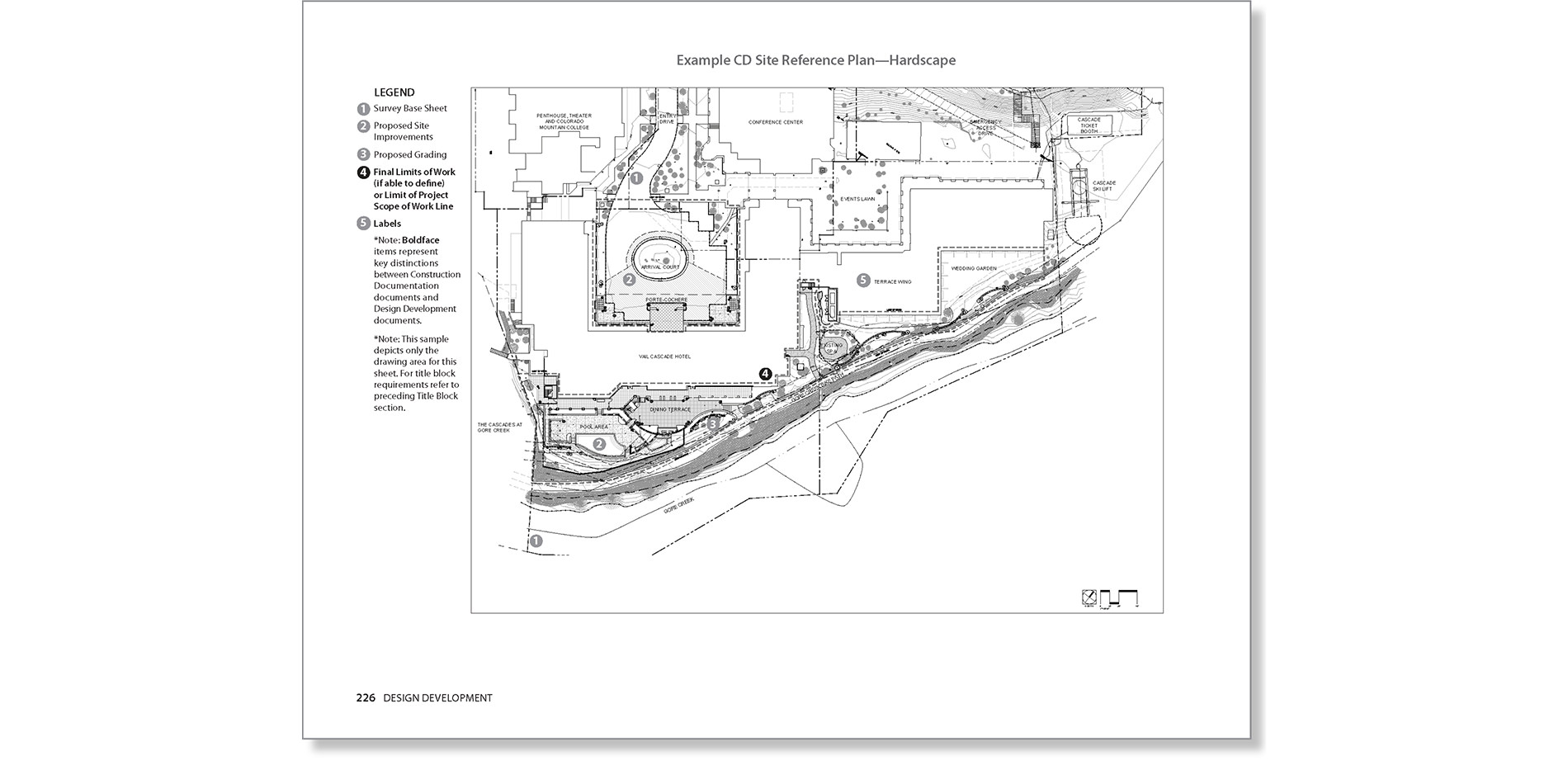
Site Reference Plan:
Document set content varies across the industry. These guidelines recommend a number of sheets not always found in landscape architectural construction documents, such as the Site Reference Plan and the Site Soils Plan.
Photo Credit: Design Workshop, Inc.
Media: Please submit high-resolution image requests to images@asla.org.
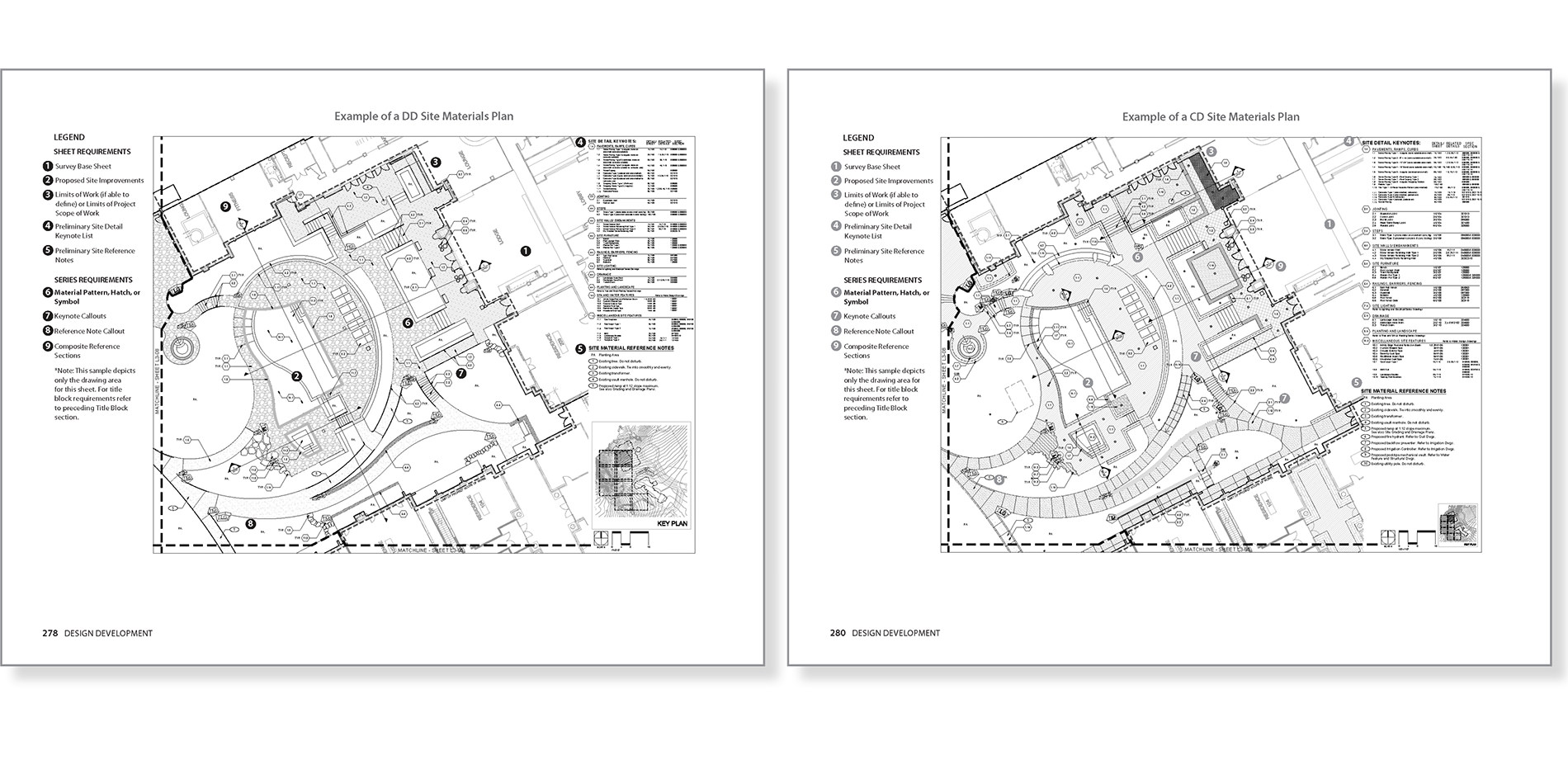
Site Materials Plan:
Effective graphic communication is best displayed on the Site Materials Plan, where a carefully coordinated set of relationships between plan hatch symbols, line weight hierarchy and keynotes define the entire material and component program.
Photo Credit: Design Workshop, Inc.
Media: Please submit high-resolution image requests to images@asla.org.
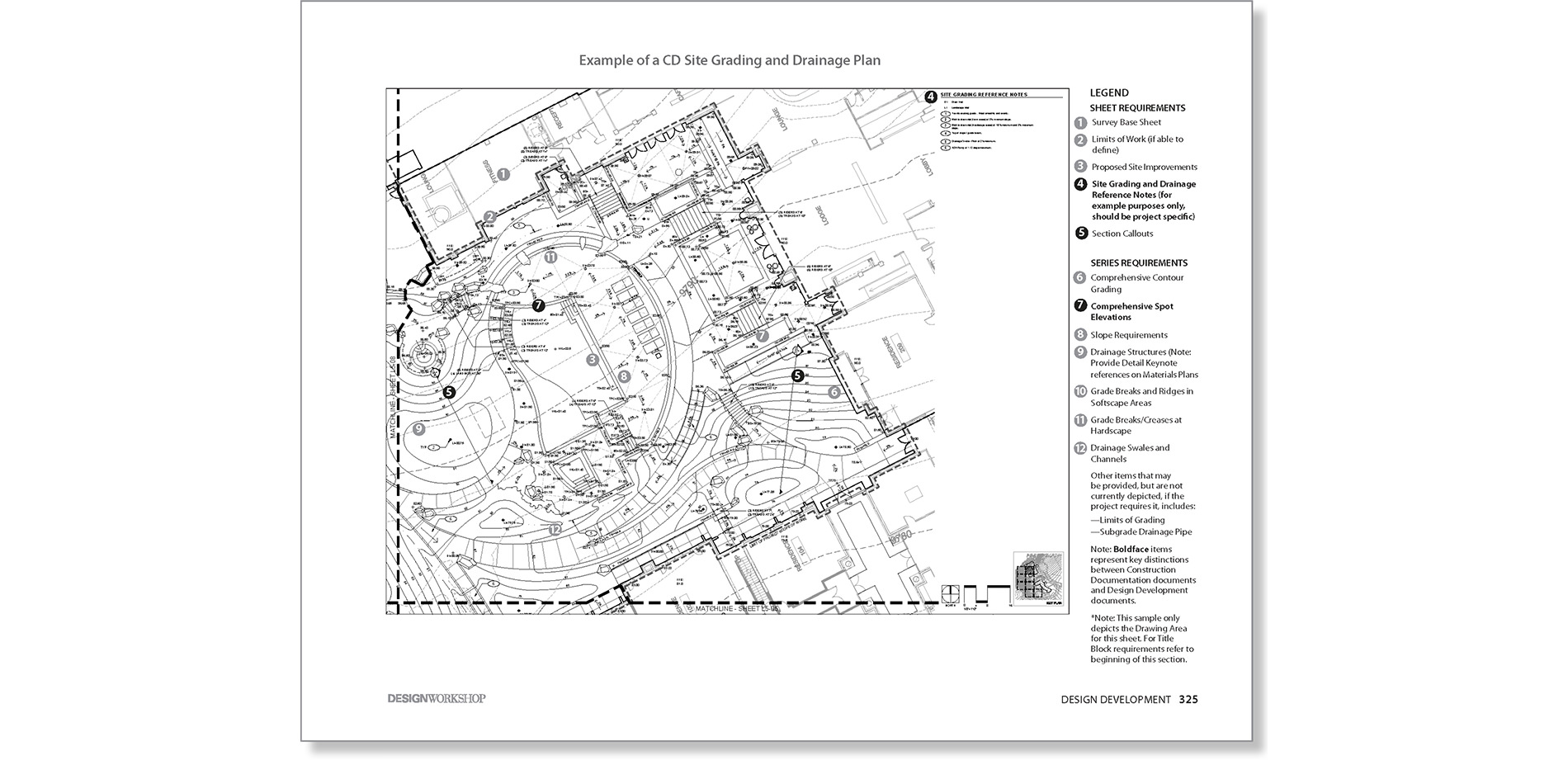
CD Site Grading and Drainage Plan:
Distinctions between different DD and CD sheets vary, e.g. the DD Site Materials Plan is fully advanced to define all materials and systems, whereas the DD Site Grading Plan is more strategic.
Photo Credit: Design Workshop, Inc.
Media: Please submit high-resolution image requests to images@asla.org.
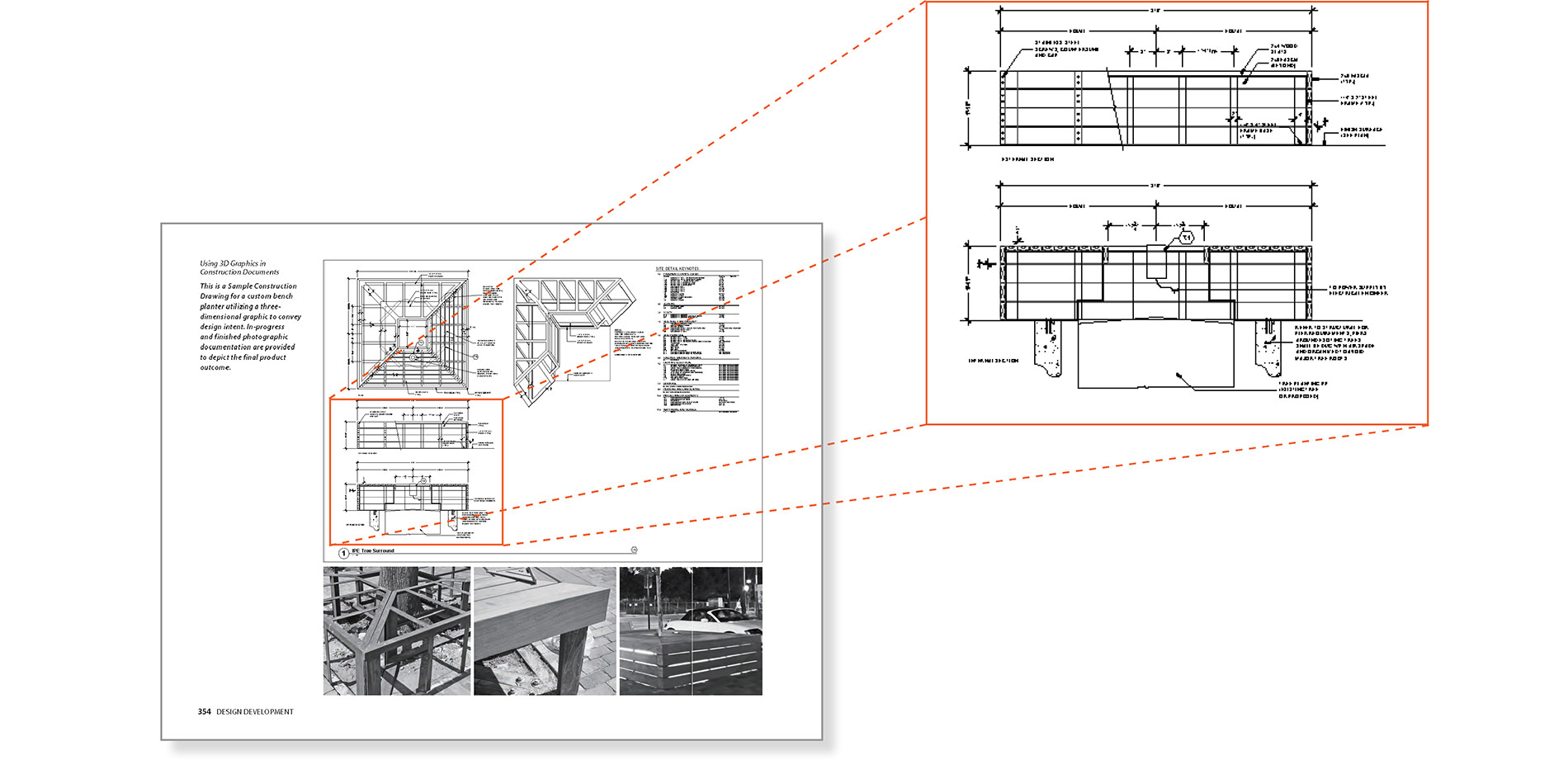
Three-Dimensional Resolution - Nothing to Hide:
A primary principle suggests the importance of three-dimensional design and documentation, to assure fully resolved components. While DD is the most essential 3-D phase, three-dimensional documentation is promoted in the Construction Documents.
Photo Credit: Design Workshop, Inc.
Media: Please submit high-resolution image requests to images@asla.org.


















